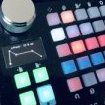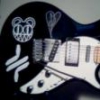Leaderboard
Popular Content
Showing content with the highest reputation on 08/01/2020 in all areas
-
I found the article which I mentioned in my earlier post regarding compressors (and it was from HonestOpinion).2 points
-
I have to admit I'm not the least bit concerned about the limitations of the looper in Helix. But that's because I'm part of the massive crowd of people that's never found a need for one. And I suspect that may be what's behind Line 6's thinking on such things. Looper effects such as those mentioned above by datacommando are in a category of much more specialized effects than the common distortion, compression, eq, delay, reverb, modulation...etc. that come with the Helix. Things that most, if not all of us commonly use. And I'm not sure I, or many like me, would be willing to pay a significantly higher price for my Helix due to it hosting an effect I'd rarely ever use. If you have a driving need for it in your performance feel free to get a good one that fits your needs and use the send/returns provided.2 points
-
What? The one on the Samba drums or the disco whistle? Right - I’m outta here (through that door over there!) https://line6.com/support/topic/22107-anyone-have-a-preset-like-the-solo-on-led-zeppelins-fool-in-the-rain/2 points
-
Now why would you take it out on the Helix? It sounds to me like your Logitech GHub might need a couple of tire tracks across it...1 point
-
Then, if you want the most intimidating and powerful looper ever made, go for a EDP (or two, or three etc...)...:)1 point
-
Here here. I always use a dedicated looper (Boomerang III) in my live setup with my HX Effects. The button functions in a dedicated looper are carefully designed by the manufacturer for creative performance looping, and they are often complex. There is no way I would want to try to combine those looper functions and switches into a Helix floor pedal. Helix buttons are designed perfectly for switching presets and effects. Live looping is, in my opinion, a separate "thing" and it really helps to mentally and physically isolate the looper buttons and functions apart from the Helix amp sim and effects. In the heat of a performance during frantic button stomping and riffing, the last thing I want is having to think about buttons and what they do. One other point: there is significant variation between available dedicated loopers (price, functions, number of parallel and series loops, ability to store loops, etc). Shop for a looper that meets your needs, read the manual and earn how to use it, practice with it, and you will always have a looper friend that always does what you want. You can use it with whatever amp sim or effects pedals you use in the future. Use the Helix looper to test presets; that's what its best used for...1 point
-
Ingredients.... Basic amp tone, fuzz, octave (actually two octaves) and judicious amounts of compression. Amp: The amp can be almost anything.... I would likely start with a Plexi normal input with very low gain. Fuzz & Octave: There is no shortage of "octave fuzz" models in the Helix... have you actually tried any of those to see if one comes close? You could also piece it together with a dedicated fuzz and a pitch block if none of the octave fuzz blocks work for you. A note about the Octave: You will need to dial in two octaves down. One octave down should be almost as loud as the original guitar... the 2nd octave should just be dialed in enough to notice.... don't over do that 2nd octave. Compress: At the end of the chain I would insert the LA Studio Comp and be really aggressive with it. That will provide the almost "synth like" dynamics of the solo.1 point
-
The LA Studio Comp emulated the venerable LA-2A compressor that has been used in studios for years. When you listen to a guitar track on an album, it is compressed... often by an LA-2A, an 1176 (which the Helix does not have) or a variety of other "studio" models, not stomps. Studio compression an important part of the "final guitar tone" you often hear on recordings and players such as Jason Sadites are well aware of it's importance. Another useful compressor within the HX line for this task is the 3 band comp... which in the studio is known as a multi band compressor.1 point
-
IIRC - Digital Igloo said that the whole point of having SEND/RETURN inserts was to allow people to patch in external favourite stomp boxes or whatever. Apparently, the thinking behind this was anyone who was using specialist loopers (Boss RC-30) in their performance could easily hook up to the Helix/HXFX etc. There are so many looper pedals out there - why reinvent the wheel, especially if looping is your “big thing” you possibly already had some efficient hardware. The looper in the HX family of products is more of a novelty, certainly not what you expect or are asking for. The best thing I found to do with it is to place it as the first block in the signal chain and then record a short snippet of audio and then you can easily switch amps, cabs IRs, effects etc., with both hands free. For the sort of features you are asking for there are plenty of options available from TC Electronic (Ditto x4), Electro Harmonix (720 stereo), Pigtronix (Infinity 2), plus the ubiquitous Boss range. Although, now, as you have invested in the HX Effects, then Line 6 should give you all those extra features - free! I guess that you must have known that the looper didn’t do all that other stuff when you bought the HXFX. You did check - didn’t you?1 point
-
“Pagey” uses the studio as an instrument, learning from the best during his time a session player in the U.K., but since Zep finished he spent the whole time doing re-master after re-master. Surely there is only so much you can wring out of a back catalogue? As for the Blue Box, isn’t that basically a fuzz with a two octave drop? Oh! Here’s a quote I found from MXR - “This is the crazy effect heard on Jimmy Page's "Fool in the Rain" solo. The Blue Box takes your guitar signal and duplicates it two octaves down for a huge, subterranean tone. The Blend knob lets you control how much of the effected tone you mix in with your dry signal. Not for the timid—there is truly nothing like the Blue Box.” Maybe “Jimbo” was using some of Mr Crowley’s magick!1 point
-
Forgot about that old thread. Some good tips to get that tone in that topic but I wouldn't mind if someone posted up a good example to CustomTone some time. That is still a somewhat elusive sound to me. Page was deft in the studio.1 point
-
No, you can't downgrade. The firmware does clamp the charge to a much lower voltage, and looks like the older the battery, the slower the charging process (I guess they need the charging speed to be way slower to prevent overcharging). Sometimes does take a full day before the transmitter starts flashing green, sometimes won't charge at all, even after days sitting in the charger. Re-flashing the unit with same firmware, sometimes, does probably reset the memory, and you can charge again..but then after coupe of cycles, it will start flashing red again. Also, the battery will last only couple of hours... old , new, doesn't matter. So, for now, just keep it in the charger for the rest of the day, and see what happens. If doesn't go green, try re-flashing again.... It's a ruined product, that's it. I sold both my G10 because of this crap, but I will keep complaining over here, 'til I feel better. :).1 point
-
Now my G10 is flashing red when on the base and does not want to charge any more! Is there a procedure to downgrade to the previous version of the firmware?1 point
-
1 point
-
You could assign a footswitch to bypass the amp. Hit the two Page buttons together and then use the Bypass/Assign to pick the footswitch. Or if you don't want to do that, then pick your preset and hit Mode, then use the top knob to the right of the screen to pick your amp block, then press down the knob right below it. That'll toggle that block off. Then you have effects only. Use that list on the benvesco site to pick a "free" (or none beyond the partitioned DSP) to save as much DSP horsepower as you can for the effects. Probably want to create a preset just for no amp.1 point
-
Sorry about that.... I misunderstood how that worked. My suggestion for going through an amp then would just be to disable both the amp and cab block. You can turn those on if you ever need to go direct, but leave them off when going to the amp.1 point
-
Hi, When asking for assistance from users of the forum, it is helpful to supply as much info as possible. Example: computer type and operating system, Ethernet or wi-fi and anything else vaguely useful to help track down a possible solution. You state you are using a Mac but not the version of OSX - Please note, if you are using Yosemite there are known issues with an expired Security Certificate. See this: Anyhow, I suggest that you could try this, (even if you are using another version of OSX) - this has worked for some other Mac Users. CUT, PASTE AND EDITED FROM MY RESPONSE IN ANOTHER THREAD If this is causing you so much trouble, then the easiest thing to do is not try to run the update over the internet and do a local install, by downloading the stuff you need and using the Line 6 Updater Utility. First you will need the HX Edit v2.92 software, then the HX v 2.92 Flash Memory for each of your Effects and Stomp boxes. (Note: This used to be a single bundle that updated all the Helix range plus HX Stomp and HX Effects) O.K. go to the "DOWNLOADS" menu at the top of this page and from "-ALL HARDWARE-" select HX Effects, then leave the "-ALL SOFTWARE-" as is, now select Mac OS X from under the "-ALL OS-" tab. from the next page you can select HX Edit 2.92, then below that you will need the HX Effects Firmware 2.92 Flash Memory. Now scroll further down the page a grab Line 6 Updater version 1.9. Download all these bits to your Mac( they need to be installed in the Line 6 folder inside your Applications Folder). Then from under "-ALL HARDWARE-“ select HX Stomp and as before repeat to then download the HX Stomp Firmware 2.92 Flash Memory - (you already have the other bits downloaded). If as you say these are newish HX units, you may have made some presets that you wish to keep, then they need to be backed up using HX Edit prior to updating the Firmware. If everything if fine then proceed to next step. Ensure that you have your first HX unit connected to the Mac by USB cable and launch the Updater Utility and select "Offline Mode". Your HX model and current firmware version should show in the window, click on the dark green coloured band and you should now have the option to select a local file - point it at the Flash Memory file you down loaded For that unit and let it get on with the update. Rinse and repeat for the second HX unit. IMPORTANT: Please read the Release Notes on the Firmware Download Page regarding backup of your existing presets etc. Hope this helps/makes sense1 point
-
If this is causing you so much trouble, then the easiest thing to do is not try to run the update over the internet and do a local install, by downloading the stuff you need and using the Line 6 Updater Utility. First you will need the HX Edit v2.92 software, then the Helix LT v 2.92 Flash Memory Bundle. O.K. go to the "DOWNLOADS" menu at the top of this page and from "-ALL HARDWARE-" select Helix LT, then leave the "-ALL SOFTWARE-" as is, now select Mac OS X from under the "-ALL OS-" tab. from the next page you can select Helix/HX Firmware 2.92 Flash Memory, then below that you will need the HX Edit 2.92. Now scroll further down the page a grab Line 6 Updater version 1.9. Download all these bits to your Mac( they need to be installed in the Line 6 folder inside your Applications Folder). If as you say this a new Helix LT , unless you have made some presets that you wish to keep then they need to be backed up using HX Edit prior to updating the Firmware. If everything if fine then proceed to next step. Ensure that you have your LT connected to the Mac by USB cable and launch the Updater Utility and select "Offline Mode". Your LT and current firmware version should show in the window, click on the dark green coloured band and you should now have the option to select a local file - point it at the Flash Memory file you down loaded and let it get on with the update. Hope this helps/makes sense1 point
-
I do. Got the effects first, paired with a Fly Rig 5, and that was my rig for several months. Then got the Stomp as a Christmas gift. I like that I can have a mini-fly Rig if I needed something compact for whatever reason. Strymon Ojai R30 powers both perfectly (for almost 2 months now). Get the 2.1-2.5 cable from Amazon so you don’t have to buy any adapters. Also get the voodoo labs current doubler for each unit. The FR5 is my backup.1 point
-
Tried all of that with Acid thrown on top for good measure. All it did was get me laid from 1978 forward all over the country and a lot of fuzzy memories of my "greatness" at venues everywhere. lol After all these years I'm starting to think that maybe massive amounts of something called "talent" may be the key ingredient that I missed! :lol:1 point
-
You can use Parallel Pitch to finetune the tuning of your guitar. The problem with this is that you can't turn it off on the patch, unlike the alt tunings on the alt tuning knob, so you have to use a slot on one of your custom banks. Enable Parallel Pitch, set all Pitch's to 0, put al Mix to 100%, then adjust Cents to desired fine tuning for all strings.1 point
This leaderboard is set to Indiana - Indianapolis/GMT-04:00






